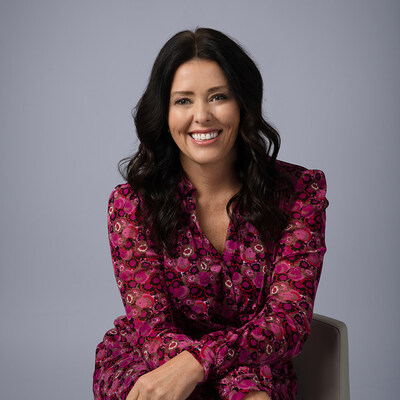They’re beginning to believe. This time last year, marketers hesitated to express confidence in a returning economy. But with a reviving stock market and corresponding increases in consumer confidence, manufacturers increased spending on new and existing brands this past year.
Where did brand management put most of its dollars in 2003? And where’s the spend for 2004 heading? Here’s a hint: the growth is not going to traditional media advertising. Instead, as the economy continues to recover, promotional marketing is thriving. According to research by PROMO editors, spending on promotional tactics grew by 9.7% in 2003.
Of the 12 segments analyzed in both 2003’s and 2004’s Industry Trends Report, cumulative growth was 10.3%. One tactic (games, contests and sweepstakes) was flat over 2002, but no segment showed any indication of decline. Event marketing, fulfillment, interactive/Internet/phone marketing and sampling all posted double-digit increases, as did agency net revenues — which generated the single largest growth rate at 17.9%. Other segments tracked by PROMO brought in solid single-digit increases (see Chart 1).
This year, the Industry Trends Report has included consumer direct mail and loyalty marketing tactics in its overall estimate of spending. The addition of these categories sharpens the portrait of the industry by providing a more complete picture of what drives consumer and shopper behavior. In the 2003 Industry Trends Report, we had estimated spending on promotional marketing reached $233.2 billion in 2002. Using last year’s definition, growth was 10.3% to $257.2 billion. This year, we reckon that in 2003 — with direct and loyalty marketing taken into account — promotions reached over $288.3 billion, up from $262.7 or 9.7%.
The migration of marketing dollars away from media advertising gained steam in 2003, as an increasing share of total consumer marketing budgets went to promotion. Total U.S. marketing expenditures were up 14.8% over the prior year, to more than $1 trillion (see Chart 3). Of that pool, 28.5% was spent in consumer promotion, as compared to 17.5% spent on consumer media advertising. The remaining 54% was spent on trade marketing, which itself increased by 25% in 2003, per statistics from Cannondale Research.
The numbers are even more lopsided in PROMO’s 2004 Industry Trends Report study, co-sponsored by the New York City-based Promotion Marketing Association. In fact, brand respondents said that 46% of their marketing dollars went into consumer promotion, while 24.2% went into consumer advertising (just 18.8% of budget went into trade promotion for this pool). Granted, this select group (PROMO subscribers and PMA members) has a predisposition towards promotional activity, but their response underscores the trend we flagged in last year’s report.
Integral to success
Noticed any new faces down the hall this past year? While a few marketing departments continued to feel the axe in 2003, most maintained or increased staffing (see Chart 6). On the agency side of the business, most respondents said they were growing revenues — but on the backs of existing staff.
When new hires were brought on, they were often refugees from ad agency layoffs. Should this anecdotal trend continue, it may foster better communication across disciplines, as brands demand more integration of marketing services.
While many industry veterans still cringe at the old positioning of promotion as the “below-the-line” after-thought of marketing, relegated whatever funds were left after Super Bowl spots and other “glamour” buys had been locked in, that history is…history. Few companies use promotions to just move the sales needle. Despite the pressure on sales in the past year, most marketers see integrated promotional marketing as a way to win both short-term sales objectives and longer-term brand loyalty goals. Of the brand participants in the 2004 Industry Trends Report, 52.4% said that promotion strategy was developed as part of an overall marketing strategy; another 12.1% say they plan promotion in tandem with advertising. Only 34.5% used promotion for purely tactical ends.
And the planners calling these shots are from the very top of the brand organization. Respondents said 70.4% of their CEOs, presidents or owners are involved in making marketing decisions (up from 64.6% in 2002). Of those polled, 42.7% said that executives even get involved in promotion decisions; this is down from last year’s poll, in which 50.9% of executives were said to be involved in promo planning. When vice presidents are added to that tier, however, a full 68.4% of executives among responding companies take part in planning promotional strategy for their brands. This is up from 64.6% of executives who took on that responsibility as part of their job descriptions in 2002.
Last year, 31.4% said their brass stayed out of the marketing/promotion equation altogether. This year, that number is down to 24.8%.
What are they looking to get from these promotional efforts? Most brands expect to get at least a 2% to 5% sales lift from a campaign (according to 33.5% of those polled), while another 37% set the bar higher, expecting 6% to 15% in sales increase. Then there are the 8.7% of the brand team who told us they expect to get upwards from 16% in boosted sales as a result of promotional tactics.
And then some! Of the brand executives polled, most expect to also get other benefits from these campaigns, including brand awareness (52.9%), incremental sales (47.6%) and a hefty return on their investments (40.8%).
No return to the old days
While a recap of 2003, tells a positive growth story for non-media marketing, both brands and agencies are sanguine about prospects for 2004 (see Chart 7). In a year that includes both a presidential election and the Summer Olympics in Greece, big money will flow to traditional advertising. And yet there are distinct rumblings of discontent about the television upfront this year, with an undercurrent of payback from buyers who have seen broadcast audiences dwindle and fragment. And, in the aftermath of the recession, fewer corporate executives are willing to rubber stamp spending on marketing that cannot be sliced, diced and analyzed for its ROI.
This year’s brand respondents say they will spend less in consumer advertising and public relations, and more in just about every other discipline. We vote for much more.
CHART 1
| Promotion Industry | SEGMENT | 2003 | 2002 | 2001 | Change 2002-2003 | % of 2003 Total |
|---|---|---|---|---|---|---|
| spending | Event Marketing | $151.80 | $132.00 | $115.00 | 15.0% | 52.6% |
| Premiums/Incentives | 45.90 | 44.1 | 42.3 | 4.1 | 15.9 | |
| Retail/P-O-P/In-store services | 17.56 | 17.35 | — | 1.2 | 6.1 | |
| Sponsorship | 9.80 | 9.39 | 9.30 | 6.2 | 3.4 | |
| Coupons | 7.00 | 6.80 | 6.50 | 3.5 | 2.4 | |
| Licensing | 6.10 | 6.0 | 5.80 | 2.0 | 2.1 | |
| Specialty Printing | 5.90 | 5.77 | 5.90 | 5.0 | 2.0 | |
| Fulfillment | 4.10 | 3.66 | 3.23 | 11.0 | 1.4 | |
| Agency Net Revenues | 3.77 | 3.26 | 2.84 | 17.9 | 1.3 | |
| Interactive (Internet & SMS) | 2.00 | 1.70 | 1.50 | 15.5 | 0.7 | |
| Games/Contests/Sweeps | 1.80 | 1.80 | 1.65 | 0.0 | 0.6 | |
| Sampling | 1.50 | 1.34 | 1.23 | 10.0 | 0.5 | |
| SubTotal Yr-Over-Yr | 257.23 | 233.17 | — | 10.3 | 89.2 | |
| Direct Mail (consumer) | 29.20 | 27.69 | — | 5.6 | 10.1 | |
| Loyalty | 1.86 | 1.83 | — | 1.5 | 0.6 | |
| Revised Total | $288.29 | $262.69 | 9.7% | 100% | ||
| Numbers expressed as billions of dollars. Source: PROMO 2004 Industry Trends Report | ||||||
CHART 2
| Growth Spurt | YEAR | NET REVENUE | % GROWTH |
|---|---|---|---|
| history | 1991 | $56.35 | na |
| 1992 | 57.10 | 1.3% | |
| 1993 | 61.90 | 8.4 | |
| 1994 | 65.60 | 6.0 | |
| 1995 | 70.02 | 6.7 | |
| 1996 | 71.53 | 2.2 | |
| 1997 | 79.40 | 11.0 | |
| 1998 | 85.40 | 7.6 | |
| 1999 | 93.44 | 9.4 | |
| 2000 | 102.50 | 9.7 | |
| 2001 | 98.04 | -3.7 | |
| 2002* | 233.17 | 137.0 | |
| 2003** | 288.29 | 23.6 | |
| *Includes event marketing for first time; **Includes direct and loyalty marketing; dollars in billions. |
|||
| Source: PROMO | |||
CHART 3
| Promo vs. Ads | GREATER SHARE IN 2003 | |||
|---|---|---|---|---|
| 2002 | 2003 | TOTAL % 2003 |
||
| total | Consumer Promotion | $233.7 | $288.3 | 28.5% |
| Consumer Advertising | 211.7 | 177.5 | 17.5 | |
| Trade Marketing | 436.6 | 546.8 | 54.0 | |
| Ttl U.S. Marketing | $882.0 | $1,012.6 | 100% | |
| Dollars in billions. Source: PROMO, Veronis Suhler Stevenson, Cannondale Associates | ||||
CHART 4
| The Mix | BRANDS SPENT MOST ON… | |
|---|---|---|
| top tactics | Direct mail | 35.8% |
| Retail merchandising | 35.3 | |
| Couponing | 31.5 | |
| Co-mktg/account-specific | 31.3 | |
| Promotional ads | 30.2 | |
| Trade shows | 29.4 | |
| Event marketing | 27.8 | |
| Entertainment tie-ins | 27.1 | |
| Games, Contests, Sweeps | 25.3 | |
| Interactive (online & phone) | 23.9 | |
| P-O-P/In-store services | 23.7 | |
| Premiums, Incentives, Ad specialties | 20.1 | |
| Loyalty marketing | 18.8 | |
| Note: Three responses allowed, so does not total 100%; percentages based on mean | ||
| Source: PROMO 2004 Industry Trends Report | ||
CHART 5
| Allocations | MONEY MIGRATES TO MEASURED DISCIPLINES | ||
|---|---|---|---|
| 2003 | 2004 | ||
| share | Sales promotion | 13.6% | 14.8% |
| Event marketing | 10.6 | 10.5 | |
| Direct marketing | 21.7 | 22.3 | |
| Trade promotion | 18.8 | 19.2 | |
| Consumer advertising | 24.2 | 22.8 | |
| Public Relations | 7.7 | 7.3 | |
| Other | 3.4 | 3.1 | |
| Total marketing budget | 100% | 100% | |
| Source: PROMO 2004 Industry Trends Report | |||
CHART 6
| Headcount | MARKETING TEAMS MORE STABLE IN 2003 | |
|---|---|---|
| staff | Increase over 2002 | 16.5% |
| Decrease from 2002 | 22.3% | |
| Stayed about the same | 50.0% | |
| Source: PROMO 2004 Industry Trends Report | ||
CHART 7
| Expectations | 2004 SPENDING FORECAST BY BRANDS | |
|---|---|---|
| future | Increase over 2003 | 31.9% |
| Decrease from 2003 | 17.5% | |
| Stayed about the same | 44.2% | |
| No answer | 7.3% | |
| Source: PROMO 2004 Industry Trends Report | ||
 Network
Network

